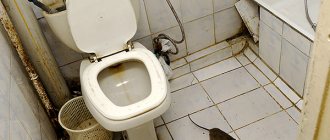- Trap tube
Some hamsters have a very restless disposition. They are restless, energetic and try to escape from their owner at the first convenient opportunity. If the hamster has escaped, you need to urgently start searching for it. After all, invisible dangers may lie in wait for the animal outside the cage. Therefore, every owner should know where a pet can hide and how to catch a hamster.
Why did the hamster run away?
The leaders in terms of escaping are the dwarfs; they are nimble, nimble and inquisitive. Owners of Syrian hamsters are also not immune to escapes, although they occur much less frequently. First of all, we need to figure out why the pet ran away and got lost. This information will help prevent future escapes.
The reasons for the flight of a furry creature may be as follows:
- Unreliable cage. The hamster cannot escape from the cage if all the bars are intact and the locking mechanism is working properly. But sometimes the little sly ones manage to gnaw a hole in their apartment and escape outside.
- The instinct of self-preservation. Having sensed a cat or other dangerous animal, the homa instinctively strives to get away.
- Fear. A small creature may be frightened by a sharp sound (clap, vacuum cleaner, scream, bark, etc.).
- Curiosity. There are fluffies who love to explore the world. Once in a new place, they want to know more about it.
- Fatigue. If Homa hasn’t gotten enough sleep, is in a bad mood, and you forcibly pulled him out of his cage to play, then rest assured: he will sneak away at the first opportunity and hide somewhere where he will be left alone.
- Inattention of the owners. The most common cause of hamster escapes. This is especially true for children, who often forget that rodents cannot be left unattended!
Try to avoid inattention and monitor the condition of the cage.
Symptoms
When living in an area where infection occurs in animals, it is better to arm yourself with knowledge by studying the symptoms of rabies in hamsters.
You need to monitor your pet to see if its behavior has changed. But rabies manifests itself not only in the form of aggression. For example, foxes stop being afraid of people, become docile, and can lick hands. Hamsters appear lost in space and run around the cage aimlessly. Appetite changes: disappears or increases. One of the signs may be strange sounds or squeaking. The main symptom is aggression.
Shortly before death, paralysis of the pharynx appears. The hamster can neither drink nor eat. He secretes a huge amount of saliva. His nose is always very wet. Convulsions or falling into a coma may occur before cardiac arrest.
If signs are detected, you should contact your veterinarian. The hamster will have to be put to sleep, but it will not suffer from suffocation.
The symptoms may not be very obvious and are difficult to notice. Owners often say that the hamster died unexpectedly. The rodent dies about a week after infection.
Reaction to escape
When a tiny creature escapes, the owners' reaction is often inadequate. Some start running and screaming, scolding the children loudly. Others, on the contrary, let the situation take its course in the hope that the pet will get some exercise and return. This attitude is fraught with the death of the animal: it can get caught by a cat, jump into a closing door or under your feet, and ultimately get stuck somewhere and die of thirst and hunger.
How to behave correctly and what to do if a hamster runs away? First of all, you need to remember Carlson’s advice and remain calm. But you need to start searching immediately. How to find an escaped hamster in a small apartment if he has been living with you for a long time?
Tamed hamsters know their nickname and sometimes respond to it. Call the baby by name and promise him something tasty. You can lightly shake the jar of his dry food: the animal is familiar with this sound and is attracted to it. There is a small chance that Homa will respond to the nickname and return to the warm hands of his owner.
But if the hamster escaped from the cage and does not want to return home, the search may take a long time. Therefore, it is important to know how to catch an escaped hamster and where it may be hiding.
Start searching immediately
Don’t expect that the hamster, after walking, will return to the house on its own, leaving you to lock the door. The search must begin immediately after the loss is discovered.
An escaped rodent faces many dangers:
- you risk accidentally stepping on it, injuring it or crushing it to death
- the animal can be injured by falling from a height, or get stuck in some crevice
- larger pets can hunt an animal running around the apartment
In addition, a hamster can chew wires, damage interior items and cause significant damage to your home.
Where to look?
You can look for an escaped hamster in an apartment anywhere. Tiny animals can hide in the most inaccessible places. If he escaped before your eyes, you should immediately examine the place where he disappeared. If you don’t find the fluffy one, close the entrance door to the room.
But if there are many rooms in the house, the search task becomes much more complicated. After all, each room will now have to be monitored separately. Most often, fugitives do not leave the room where their cage is located, but there are exceptions. So what to do if the hamster runs away, where to look for your pet?
First of all, inspect the following places:
- Cabinets and other furniture. The hamster may hide behind or under the backs of dressers and cabinets. If he escaped in the bedroom, first look under the bed.
- Carpets, rugs. A frightened animal may well crawl under the rug, especially if it does not fit well to the floor. To avoid crushing the crumbs, it is better to remove the rugs.
- Heat and water supply system. Rodents love warm places, so they are able to hide under the sink or near the radiator.
- Pantry. If you have a pantry at home, then this is a paradise for a rodent. It's always quiet there and there's something to eat. If the furry friend settled down there, the search will last for weeks.
Basically, if a hamster runs away, it could be anywhere. But one thing is certain: small rodents do not jump very high, so you should look for the animal in the lower part of the premises.
Signs of pests
The wild rodent is not frightened by the presence of people, so it calmly occupies the homestead territory and safely settles down on it. You can determine that you have country hamsters by the following signs:
- numerous minks;
- paw prints and trails on the soil surface;
- traces of gnawing on fruits and vegetables;
- the presence of underground tunnels leading to plant rhizomes;
- damage to the lower part of the bark and young shoots of vegetation.
If you find all this on your site, you need to take immediate action. Considering some of the life features of such pests, you risk losing everything you have grown on your site.
Tracking down the fugitive
First of all, let's set priorities: before catching an animal, it must first be detected. Therefore, the question “how to catch an escaped hamster?” replace it with “how to track an animal?”
Methods of tracking a baby can be different. They depend on the size of the room, the number of rooms and the availability of available materials. First, let's figure out how to catch a hamster in an apartment with several rooms. You can determine the location of a rodent in different ways:
- attract food. Treats should be left in the hallway, each room and kitchen overnight, and all doors should be closed tightly. Carry out an audit the next day. Where the grains disappear (or are scattered), there the homa hides;
- listen. The hamster can gnaw grains, squeak quietly or rustle its claws on the linoleum. Hide, turn off the lights and listen. It is advisable to turn off noisy electrical appliances;
- look around. You may notice rodent feces.
When you figure out the room in which your pet is hiding, find out which side of the room he is hiding in. To do this, add the grains again, and rub a thin layer of flour around them. In the morning you will definitely see a chain of tiny footprints leading to the homa’s shelter.
We lure the animal out correctly
It happens that the hamster cannot be detected after inspecting the room several times. In this case, the pet's attention will have to be attracted with treats.
We lure the animal correctly:
- Choose flavorful treats that your pet likes best.
- Place treats along the walls because this is how a scared hamster moves.
- Be sure to place several shallow drinkers along the walls!
After placing treats, check them every hour. As the treats disappear, you will be able to figure out which part of the room your hamster is hiding in.
Tip: if you were unable to locate the fugitive during the day, be sure to leave several bowls of water and food overnight. Bowls should be placed closer to walls or corners of the room, under furniture or in other likely hiding places.
How to catch a hamster in an apartment?
The easiest way to catch a rodent is to pour out treats and wait for the pet to come to eat. If the trick worked, you need to quietly approach the fluffy and cover it with a light cloth napkin, this will prevent him from going on the run again.
Carefully! You must approach quietly and quietly so as not to scare the animal!
This technique does not always work. Sometimes it takes too long to wait for the hamster, but you have urgent matters. Or the animal may hoard food and ignore treats. What to do in this situation? There are a few other clever tricks you can use if your hamster has escaped from its cage.
The cell is the home
Perhaps your pet already misses his cozy home, but does not dare to go out. Try placing his cage in the center of the room at night with the door open and a ladder along which he can get inside. Hang up a drinking bowl with fresh water in advance and fill the animal’s bowl with its favorite treat.
You can put pieces of food on the steps of the ladder so that the homa will definitely find his way. There is a chance that by morning the pet will return to its native land.
Favorite toy
It is possible to attract a fluffy's attention with attractions. What is hamsters' favorite toy? Of course, the wheel! Set up the attraction in the room where the animal is hiding. If you hear familiar sounds, immediately go to catch the rodent.
rustling
You can try another method of catching a hamster. To do this, turn off all electrical appliances and lights in the room. Stay in the room with the rodent in the dark and do not move. Listen to the sounds the animal makes. You may need to wait a while. But eventually you will hear the rodent moving. You can, in order to attract a hamster, prepare carrot slices in advance. They should be tied to a string with a bell. When the animal starts eating the vegetable, you will hear a bell ringing.
Traps
It happens that all of the above actions did not lead to the capture of the fugitive. Then you will need a hamster trap that is easy to make with your own hands. The trap will help both lure the hamster out from under the closet and keep him in. Don’t be alarmed, this device is very humane and will not harm your pet.
Trap tube
If the animal is hiding under a closet or bed, you can catch it with a snorkel. The snorkel is most often used to catch a rodent that is not used to being handled. Don't know how to make a hamster trap? Everything is very simple:
- Take a paper towel roll.
- At one end attach a fragrant treat.
- Seal the tube on the bait side.
- Point the open end towards where the hamster is hiding.
When the homa comes to eat, cover the entrance with your palm and transfer the trap tube into the cage. Lift the sleeve carefully so as not to scare the fluffy one!
Bottle trap
You can catch a small animal using a plastic bottle trap. It is most convenient to make a device from a 2-liter bottle with flat walls (so that the trap does not swing in different directions).
Cut off the bottom on three sides, leaving the fourth intact. Bend it up and secure it in this position with an elastic band. In this trap, the door will not slam shut; air must flow through the entrance. Attach a bridge to the bottom edge of the bottle so that it goes up inside the bottle and bends slightly under the weight of the tiny creature. The center of the bridge should be rubbed with a nut, and the treat itself should be placed inside the bottle.
The hamster, sensing the aroma, will go into the bottle, chew the treat, but will not be able to jump back onto the bridge. This is where you catch the animal!
Bucket trap
Usually, they try to catch rodent pests using a bucket by pouring water into the bottom. We don’t want to cause harm to the funny little animal, so we line the bottom with a thick layer of sawdust or hay so that the hamster doesn’t hurt himself when he falls.
So here are the instructions:
- take a bucket, pour a shockproof layer of bedding inside;
- cover the trap with a sheet of paper;
- place a treat on top.
- attach a “ladder” to the bucket (ruler, ladder made from books, etc.);
- Place a seed on every 2-3 steps.
The fluffy miracle, making its way up the stairs, realizes that there is something tasty at the top. Seeing the bait, the pet will stand on the paper and fall into a bucket on a soft bedding, where it will wait for the owner. The little animal will not be able to get out of the bucket because of the high edges.
Expulsion method
There are several ways to get rid of hamsters in the country by expelling them:
- The method of flooding burrows is used if all branches extending from the main burrow are blocked. High pressure water is supplied continuously until the animals appear on the surface of the soil.
- Digging holes. This is a labor-intensive method that will require not only physical effort from you, but also patience. Its effectiveness increases if the dug hamster holes are treated with a special pesticide.
- To remove hamsters from your property, you can use another method - expulsion using carbide and smoke bombs. The checkers are placed as deep as possible in the holes and left there for several hours. If you use carbide, you need to take a little substance, put it in a hole and sprinkle it with moistened soil. When exposed to moisture, the toxic substance releases a specific odor. It spreads throughout the hole and thus smokes out the hamster.
- Mouse cats or dogs trained to catch rodents will help catch rodents. But there is one unpleasant moment in this fight - sometimes the pest wins in such a fight.
- An ultrasonic repeller is an effective way to combat wild hamsters in the garden. The device is tuned to a specific frequency. Ultrasonic waves negatively affect the hearing system of rodents, and they are simply forced to crawl out. Such devices operate both on batteries and from the mains. The range is more than eight meters.
Prevention of escapes
If your hamster often runs away, you need to think about the reasons for this phenomenon. To stop the escapes, follow these recommendations:
- Strengthen the cage. You should patch holes that animals have gnawed and check the reliability of the door. By the way, the door can be kept closed using a clothespin.
- Create a calm environment for your pet. If there is a stereo system, TV and other noisy devices next to the cage, then the Homa runs away from the house precisely because of them. Move the rodent's house to a place where it cannot be reached by loud noises or other pets.
- Don't break your daily routine. If you see that the fluffy is not in the mood for communication and wants to sleep, do not force him to play, otherwise he will try to run away.
- Do not leave the animal alone outside the cage. Follow every step so you don’t have to search and catch later.
These basic tips will help prevent your hamster from escaping and will make his and your life calm and comfortable.
Remember: small rodents rarely escape from a good life. If the hamster runs away, your task is to double your vigilance, quickly catch your pet, check the health of the cage and make sure that the animal lives in peace.
Secrets of preparing bait
Bait for rodents Whatever homemade mousetraps are made, the main thing in them is the optimal choice of bait, thanks to which the mouse will want to climb there. Despite the famous children's fairy tales in which cheese is the main delicacy for mice, this is not entirely true. Mice do not eat cheese with the same pleasure as bulk products with a strong odor:
- sunflower seeds;
- bread crusts soaked in vegetable oil;
- croutons with sesame oil;
- pieces of fried lard or sausage;
- buckwheat, rice or wheat;
- nuts;
- fresh meat.
On a note!
When installing traps, it is important to provide optimal ways to approach them so that a mouse in an apartment or house can easily reach and get into the prepared device.
Additional protection
Additional devices should be considered to prevent escape. If you are using an aquarium with a mesh top, hang a weight at each corner of the lid. This will prevent your pet from knocking over or opening the cage during play and active movements.
Veterinarians also recommend installing a metal clamp on the cage door. This will prevent any escape attempts and ensure the safety of your pet.
You can also put a security lock on the wire part of the aquarium. This will not give the hamster even a chance to lift the lid of the glass tank.
So that guests leave quickly
To kick the annoying person out of the house as quickly as possible, follow these steps:
- Take a glass of tap water.
- Unnoticed by the guest, speak a spell over the water so that the chosen person will leave soon: “I spill water on the floor, I wash the path for the slave or slave of the Lord (name of the guest). Just like a stream of water flows across the floor, so he will quickly get ready and leave.”
- Pour water under the feet of the chosen person.
In the next hour, the guest will feel uncomfortable and want to leave as soon as possible. If it is not possible to use water for a spell, read the indicated spell on salt and pour it near the feet of the annoying person.
If you don’t want to change your plans at the last moment and suffer from impudent, deceitful friends who show up to visit without an invitation, feel free to use one of the given magical rituals. Such conspiracies will not cause any harm to these people, and will allow you to enjoy life without being rude.
Which cage is the most reliable?
Veterinarians recommend using an aquarium-style cage with a mesh lid. It is more reliable than products made from wire and mesh. The cage should be spacious enough, because hamsters need much more space than we think. These animals are very active. In the wild, they can walk about 5 km per night.
The hamster's home should be narrow and long. These animals do not like vertical cages.
If you use a cage made of wire or mesh, make sure that its bars are located at a distance of no more than 1.3 cm. This will prevent the animal from escaping. If the bars are damaged or loose, replace them immediately.
Do not use cages made of wood or plastic. Hamsters are rodents with sharp teeth. They can easily chew through such material and get out of the cage.
Use toys
When a hamster tries to escape from its cage, it is controlled by its natural instincts. Therefore, you should find alternative ways to meet your pet's biological needs.
Try to make the cage attractive to the hamster. This can be achieved with the help of toys. Be sure to install a running wheel in the cage with a diameter of at least 20 cm. Place walnut shells and wooden objects on the bottom so that your pet can chew them.
Hamsters love to climb through narrow spaces. Therefore, special tunnels need to be installed in the cage. You can make your own from empty toilet paper rolls.
You should play with your hamster outside the cage once a day. This will satisfy your pet's interest in the outside world and prevent escape.
Useful tips
To make the search for the fugitive successful, follow simple rules:
- If there are other pets living in the apartment, move them away from the place where the hamster is supposed to be.
- When using mousetraps, be sure to remove them so that the animal does not get caught in them.
- Once you find an animal, limit its movement around the apartment. To do this, close all exits from the room.
- To avoid scaring the tiny creature, do not make loud or harsh sounds.
- Quite rarely, a hamster can be found in the folds of clothes, towels or bed linen - he climbs there to keep warm.
Check the cage regularly to eliminate defects in a timely manner, and ensure that the door is closed tightly. Make sure your pet is comfortable in his house and there are no irritating factors nearby. Give the animal more time and buy toys if necessary. The best way to catch a hamster is to prevent it from escaping.
Where do rodents go?
If your pet runs away, first examine all the hiding places. The faster you do this, the higher your chances of finding it. Carefully inspect:
- places near the cage;
- space under the sofa and other furniture;
- look in all the cabinets and boxes - if your pet is hiding there, you will have to lure him out with a treat.
If the hamster escapes, examine all secluded places
Almost all breeds of hamsters have similar habits. Keep the house quiet and listen. This way you can hear a characteristic rustling sound and determine the pet’s location. If you find it, but it is impossible to get it, place an open cage with your favorite food next to it. Most likely, the hamster will return to its home. Place cardboard tubes and labyrinths on the floor that will arouse the animal's interest and force it to come out of hiding. If the animal is found under a cabinet or furniture, move it carefully so as not to crush the tiny creature. Quite rarely, rodents escape to the lower floors of the house.











